Potato peels often end up in the trash, seen as nothing more than waste. But did you know that these humble scraps are packed with nutrients and offer a surprising number of uses?
Instead of tossing them out, you can transform potato peels into valuable resources for your kitchen, home, and garden.
From boosting your immune system with nutritious snacks to enriching your garden soil, there’s more to potato peels than you might think.
#1. Potato Peel Chips: A Nutrient-Packed Snack
You might be surprised to know that potato peels are an excellent source of fiber, vitamin C, potassium, and iron. Making potato peel chips is one of the easiest and tastiest ways to repurpose them.
How to Make:
Simply toss the potato peels with olive oil, a pinch of salt, and your favorite seasonings like garlic powder or paprika. Then, bake at 200°C (400°F) for 15-20 minutes until they’re golden and crispy.
Nutritional Benefits:
100 grams of potato peels can provide about 4.7 grams of fiber, which helps with digestion and promotes a feeling of fullness. They also contain 19% of your daily value of potassium, crucial for heart health and fluid balance.
Potato peel chips are a crunchy, guilt-free snack full of flavor and nutrients, making them a fantastic alternative to processed chips.
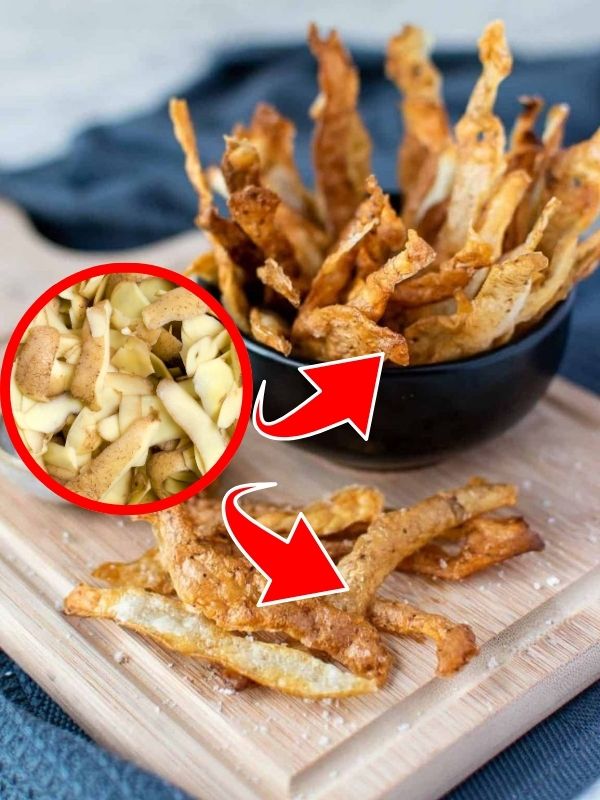
#2. Boost Your Garden Soil with Potato Peels
Potato peels decompose quickly, making them an excellent addition to your compost. They’re rich in nitrogen, which is essential for healthy soil and plant growth.
How to Use:
You can simply add the peels directly to your compost pile or garden soil. Alternatively, boil the peels in water, let the liquid cool, and pour it over your plants as nutrient-rich water.
Nutritional Benefits:
The nitrogen in potato peels helps improve soil structure and encourages the growth of healthy plants. Over time, the peels break down and release minerals like phosphorus and magnesium into the soil, enriching it.
Potato peels can help you create rich, fertile soil, ideal for growing vegetables, flowers, and herbs.
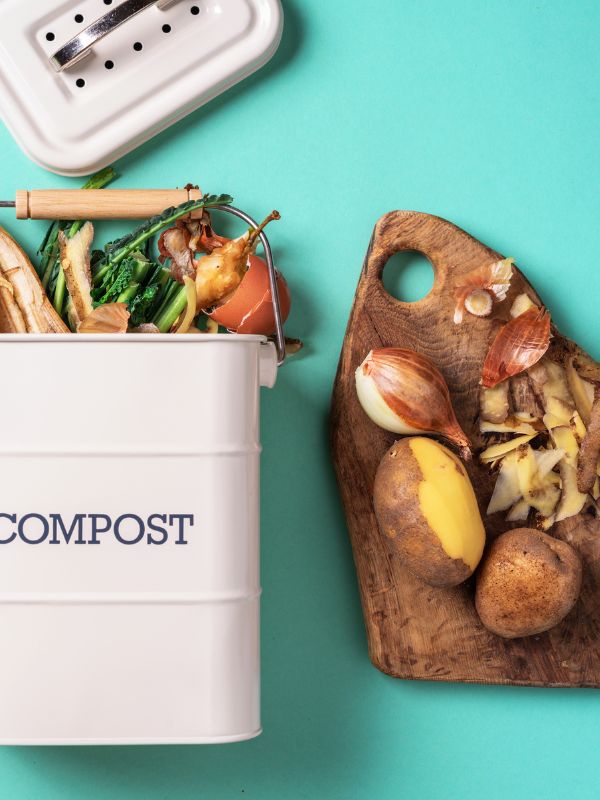
#3. Natural Fertilizer: Potato Peel Water
Instead of buying expensive fertilizers, you can make your own by boiling potato peels in water. The result is a nutrient-packed water that’s ideal for nourishing plants.
How to Make:
Simply boil the peels in water for about 10-15 minutes. Let the water cool and then use it to water your plants.
Nutritional Benefits:
Potassium and phosphorus from the potato peels infuse the water, supporting your plants’ growth and promoting flowering. This organic fertilizer helps boost plant vitality without harmful chemicals.
Using potato peel water is a cost-effective and eco-friendly way to promote strong, healthy plants in your garden.
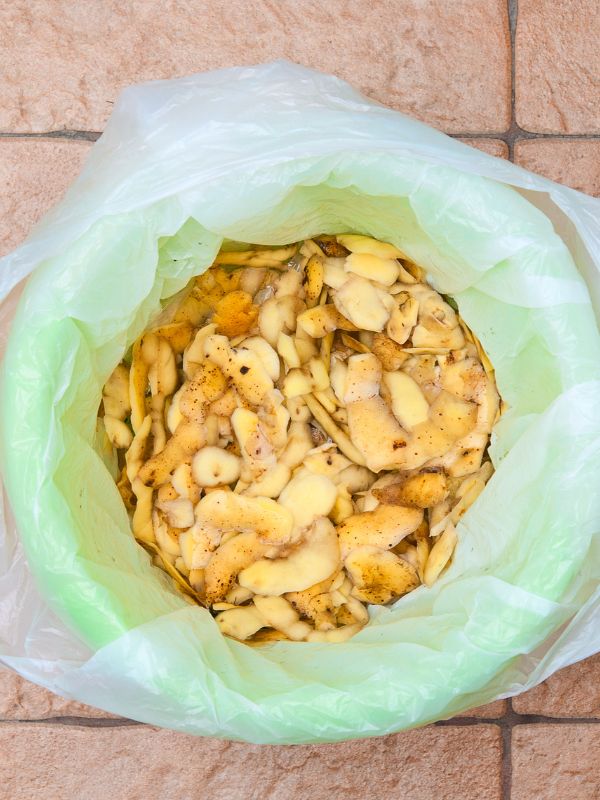
#4. Potato Peel for Natural Cleaning
Potato peels are rich in starch, which makes them surprisingly effective for cleaning and polishing various items around the house.
Polish Silverware:
Rub the inside of a potato peel on tarnished silverware. The starch helps lift the tarnish, leaving your silverware sparkling clean.
Clean Glass:
You can also rub potato peels on glass surfaces. The starch will help remove grime, and once you wipe it off with a damp cloth, the glass will be streak-free.
Nutritional Benefits:
While you won’t be eating the starch, using potato peels as a cleaning agent can save you from using harsh chemicals in your home. It’s a safe and eco-friendly alternative.
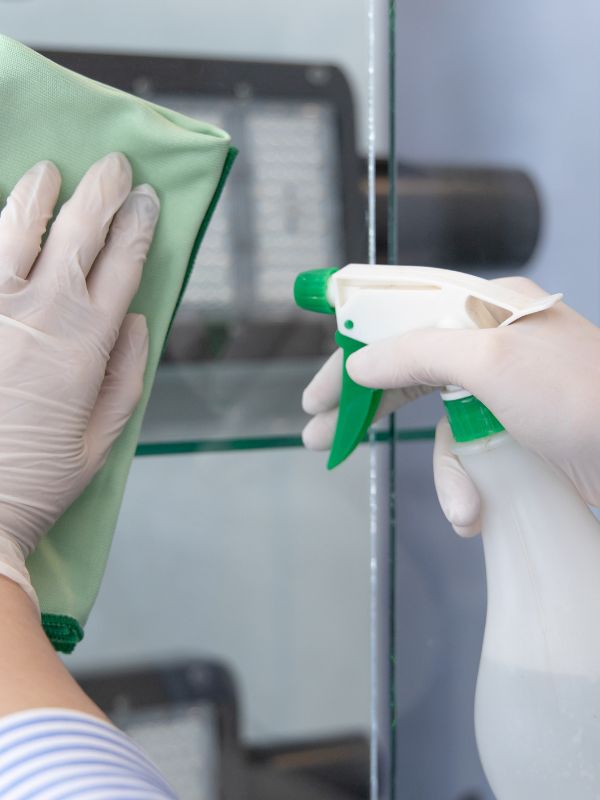
#5. Feed Your Livestock and Pets
If you have chickens, pigs, or even composting worms, potato peels are an excellent food source. However, it’s important to cook them to avoid any potential toxins, especially if they have green spots or sprouts.
How to Use:
Boil the potato peels to ensure they are safe to consume, and feed them to your livestock or pets. This will provide them with extra nutrients like vitamin C and fiber.
Nutritional Benefits:
Boiled potato peels offer essential vitamins, like vitamin C and B vitamins, that support the immune system and general health of your animals.
Just be sure to avoid feeding raw potato peels with green spots, as they contain solanine, which is toxic in large quantities.

#6. Make Potato Peel Powder for DIY Projects
After drying potato peels, you can grind them into a fine powder, which can be used in a variety of ways.
How to Make:
Dry the potato peels by spreading them out in a single layer on a baking sheet and leaving them in a warm, dry area. Once fully dried, grind them into powder using a blender or food processor.
Nutritional Benefits:
The powder can be sprinkled around your garden to boost soil nutrients or mixed into homemade face masks for an exfoliating and nourishing skincare treatment.
This versatile powder can also be used in DIY face masks, helping to exfoliate and rejuvenate your skin naturally.

#7. Use Potato Peels as a Natural Dye
Potato peels contain natural pigments that can be used to create light-colored dyes, perfect for fabric or yarn.
How to Use:
Boil potato peels in water to extract the dye, then immerse fabric or yarn in the liquid. You can create soft, earthy tones ideal for crafting projects.
Nutritional Benefits:
While the dye itself doesn’t offer nutrients, using potato peels for fabric dyeing is an eco-friendly way to repurpose food scraps.
Potato peel dyeing is a creative and sustainable way to give old fabrics new life, all while helping reduce waste.

#8. Deodorize Your Trash Bins
If you’ve ever had issues with foul odors in your trash bins, try using potato peels to help absorb those unpleasant smells.
How to Use:
Place a handful of dried potato peels at the bottom of your trash bin to absorb moisture and odors.
Nutritional Benefits:
Potato peels can reduce moisture and control odors, helping to maintain a cleaner and more pleasant environment in your kitchen or outdoor bin.
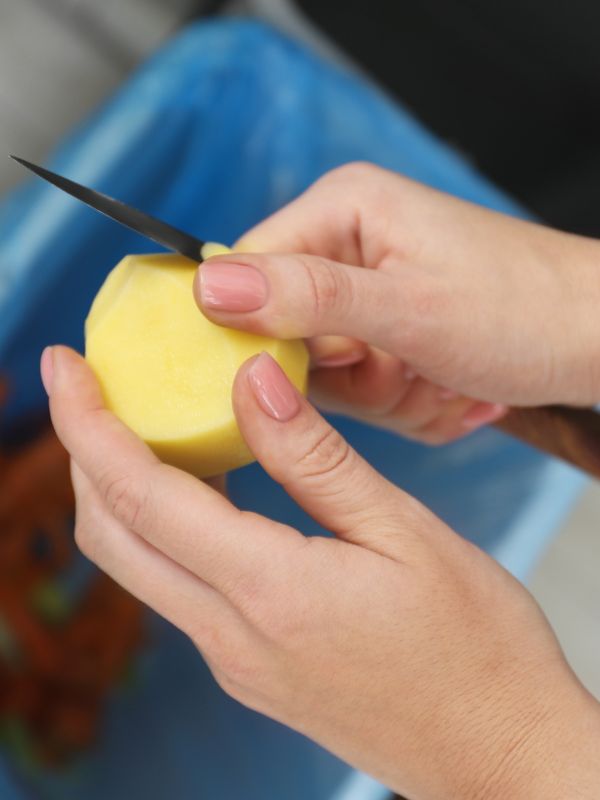
#9. Use Potato Peels as a Fire Starter
Potato peels can be an excellent source of kindling for starting a fire. Their dryness and flammable nature make them a great addition to your fire-starting materials.
How to Use:
Simply dry the potato peels and store them in a safe container. They can be used when lighting a fire, camping, or during an emergency.
Nutritional Benefits:
The peels themselves are not consumed for nutrition, but their use as kindling provides a sustainable way to recycle waste.
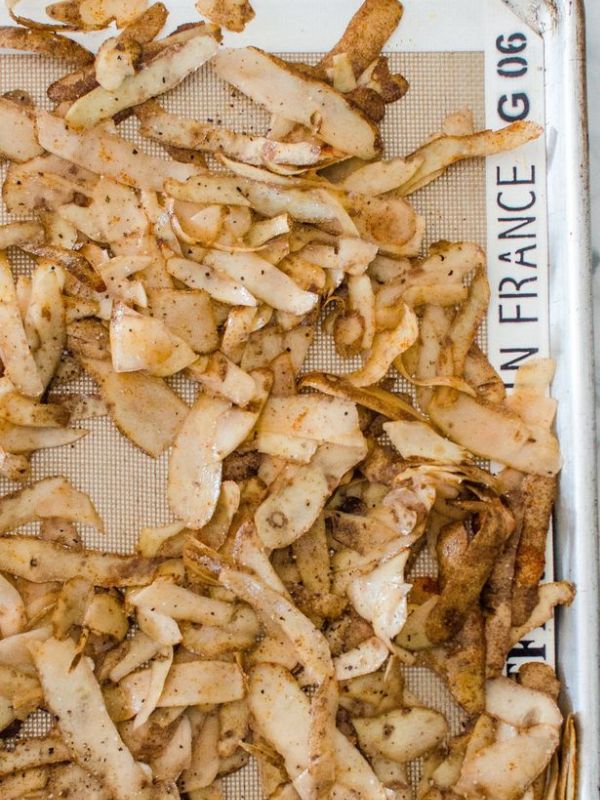
Cautions and Precautions
Potato peels with green spots or sprouts contain solanine, a toxic substance that can cause digestive distress and other health issues. Avoid using these peels for consumption or feeding them to animals.
Always wash the potatoes well before peeling to remove any dirt or pesticides.
When feeding potato peels to livestock or pets, ensure they are cooked properly to eliminate toxins and offer balanced nutrition.
While potato peels are great for cleaning, don’t overuse them on delicate surfaces, as their starch content might leave residues.
Disclaimer
This article is for informational purposes only and should not replace professional advice.
Always consult a healthcare provider if you have concerns about allergies, toxin consumption, or health-related issues.
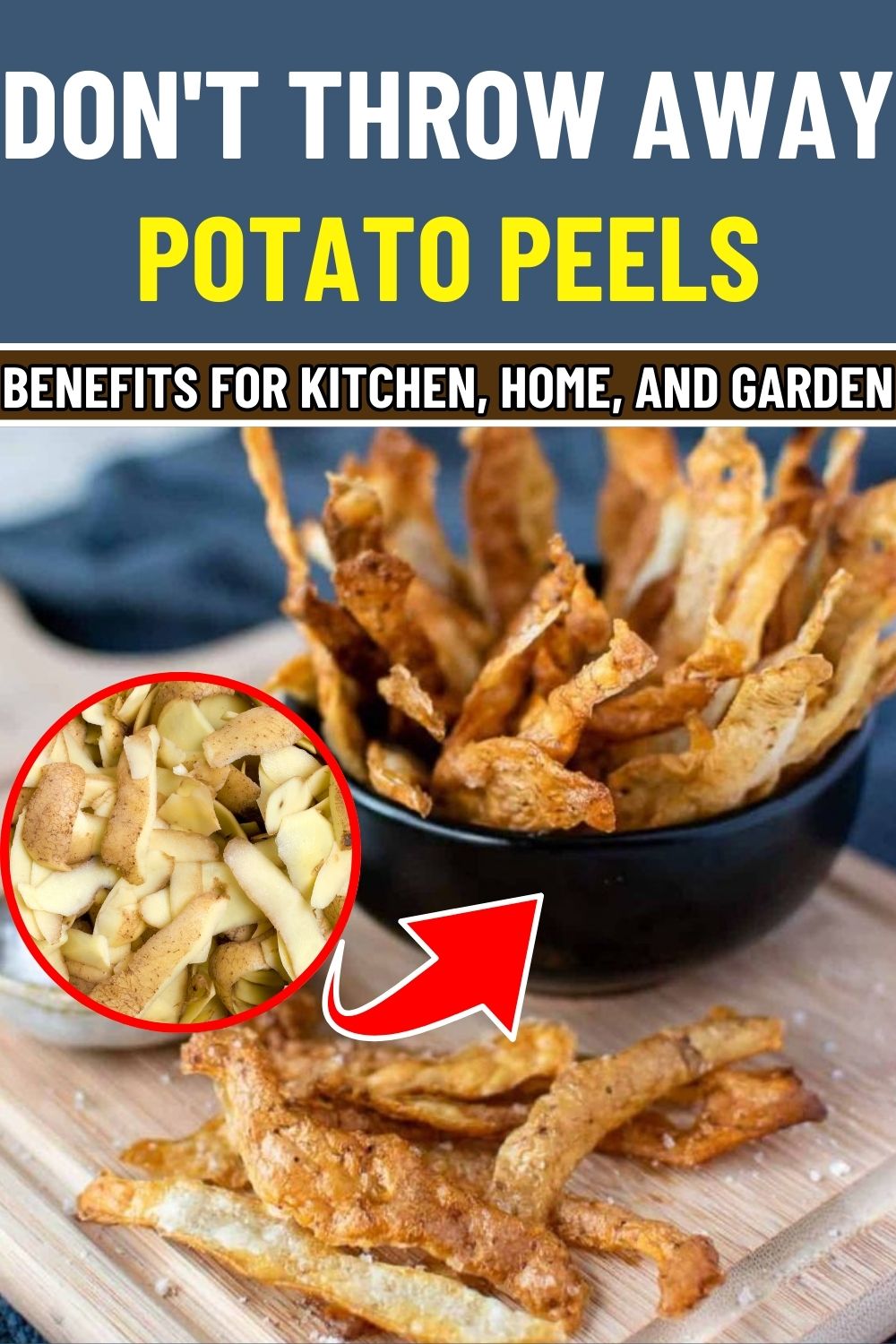
Have You Been Throwing Away Potato Peels? Here’s Why You Should Keep Them
